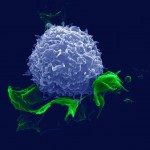Link to Pubmed [PMID] – 7756483
Clin. Infect. Dis. 1995 Mar;20(3):606-10
We prospectively determined the value of liver biopsy for microbiological diagnosis of infection in patients infected with the human immunodeficiency virus (HIV) who had unexplained fever and whose serum levels of alkaline phosphatase or gamma-glutamyl transferase were at least 1.5 times the upper limit of normal. From December 1989 to December 1991, 108 HIV-infected patients were referred to the Liver Unit at Hôpital Laënnec (Paris) with liver abnormalities related to viral hepatitis (generally chronic), AIDS-related sclerosing cholangitis, or nonspecific lesions (detected on histologic examination). Twenty-four patients had unexplained fever and increased levels of alkaline phosphatase or gamma-glutamyl transferase, and none had evidence of hepatobiliary disease. All 24 patients had undergone routine microbiological tests to determine the cause of their chronic fever. The results of all microbiological tests were negative. We performed liver biopsies for these 24 patients and examined the specimens by means of standard direct microbiological techniques; in addition, the specimens were cultured, the specimens were analyzed by standard histopathologic methods, and specific histologic studies for fungi, mycobacteria, and viruses were performed. A microbiological diagnosis was made in 13 (54%) of the 24 cases within 12 hours to 3 days of the liver biopsy. In conclusion, liver biopsy is a powerful diagnostic tool for rapid diagnosis of infection in HIV-infected patients who have unexplained fever and abnormal liver function test results.

